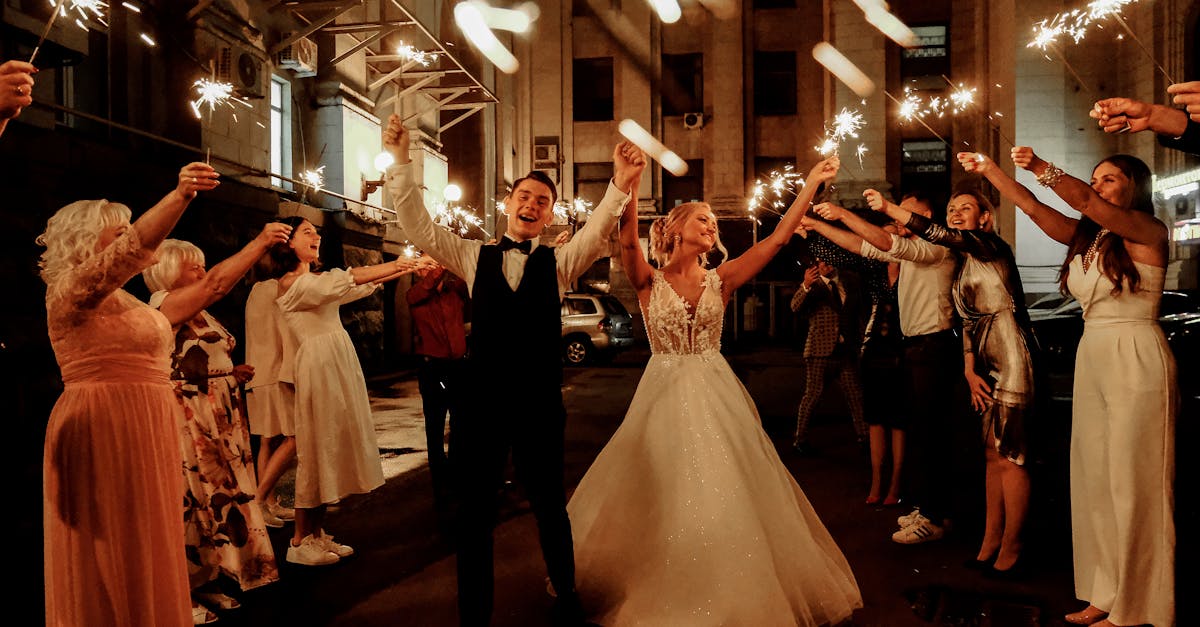Introduction
Interracial marriage is a union between two individuals of different races. It has been a controversial topic throughout history, with many laws and societal norms prohibiting it. However, the legalization of interracial marriage has had a significant impact on society and paved the way for greater acceptance and equality.
In this article, we will explore the history of interracial marriage legalization in the United States and its impact on society. It is important to understand this history to appreciate the progress that has been made and the work that still needs to be done.
Interracial marriage laws date back to colonial times, with many states prohibiting it through the 19th century. The impact of slavery on interracial marriage cannot be ignored, as many slave owners forced their slaves into sexual relationships and marriages. However, there were also examples of consensual interracial marriages before legalization.
The Civil War and Reconstruction brought about significant changes in interracial marriage laws, with some states legalizing it during this period. The Reconstruction amendments, which abolished slavery and granted citizenship and voting rights to African Americans, also had an impact on interracial marriage laws.
The Civil Rights Movement played a crucial role in the legalization of interracial marriage, culminating in the landmark Supreme Court case Loving v. Virginia in 1967. This case struck down state laws prohibiting interracial marriage and paved the way for greater acceptance and equality.
Since Loving v. Virginia, there have been significant changes in interracial marriage rates and societal attitudes towards it. However, there is still work to be done to ensure that all individuals have the right to marry whomever they choose, regardless of race.
In conclusion, the history of interracial marriage legalization is a complex and important topic. By understanding this history, we can appreciate the progress that has been made and continue to fight for equality in marriage and beyond.
Table of Content
- Before the Civil War
- The Civil War and Reconstruction
- The Civil Rights Movement
- Post-Loving v. Virginia
- Conclusion
Before the Civil War
Before the Civil War, interracial marriage was not only frowned upon but also illegal in many states. The idea of marrying someone from a different race was considered taboo and went against societal norms. The laws that prohibited interracial marriage were rooted in racism and white supremacy, which were prevalent during that time.
Slavery also played a significant role in the prohibition of interracial marriage. Slave owners believed that allowing their slaves to marry someone from a different race would lead to a loss of control over their property. They also believed that interracial marriage would lead to the mixing of races, which they saw as a threat to the purity of the white race.
Despite the laws and societal norms, there were still some examples of interracial marriage before legalization. Some couples chose to defy the laws and marry in secret, while others simply lived together without getting married. These couples faced significant challenges, including discrimination, harassment, and even violence.
It wasn't until after the Civil War that some states began to legalize interracial marriage. However, these laws were still limited and only applied to certain races. For example, some states allowed marriage between white and Native American individuals but prohibited marriage between white and African American individuals.
In conclusion, the history of interracial marriage legalization in the United States is a complex and often painful one. The laws that prohibited interracial marriage were rooted in racism and white supremacy, and it wasn't until much later that these laws were overturned. Understanding this history is essential to understanding the ongoing fight for equality and justice in our society today.

The Civil War and Reconstruction
The Civil War and Reconstruction marked a turning point in the history of interracial marriage legalization in the United States. Prior to the Civil War, many states had laws prohibiting interracial marriage, and the institution of slavery further complicated the issue. However, the Civil War and subsequent Reconstruction period brought about significant changes in the legal landscape.
During the Civil War, President Abraham Lincoln issued the Emancipation Proclamation, which declared that all slaves in Confederate-held territory were to be set free. This proclamation had a profound impact on the legality of interracial marriage, as it undermined the notion that slaves were property and therefore could not enter into legal marriages. Additionally, the Reconstruction amendments to the Constitution—the 13th, 14th, and 15th amendments—abolished slavery, granted citizenship to all people born or naturalized in the United States, and prohibited states from denying citizens the right to vote based on race, respectively. These amendments laid the groundwork for further legal challenges to interracial marriage laws.
During this period, several states began to legalize interracial marriage. In 1868, South Carolina became the first state to do so, followed by Alabama, Florida, and Georgia. However, many other states continued to uphold their anti-miscegenation laws, and it would be several more decades before the issue was fully resolved.
Overall, the Civil War and Reconstruction period marked a significant shift in the legal landscape surrounding interracial marriage. While many challenges remained, the groundwork had been laid for further progress in the fight for marriage equality.

The Civil Rights Movement
The Civil Rights Movement was a pivotal moment in the history of the United States, and it played a significant role in the legalization of interracial marriage. During this time, activists fought for equal rights for all individuals, regardless of their race or ethnicity. One of the key issues that they focused on was the right to marry whomever they chose, regardless of their partner's race.
The Civil Rights Movement brought attention to the issue of interracial marriage and helped to change public opinion on the matter. Activists argued that laws prohibiting interracial marriage were unconstitutional and violated the principles of equality and freedom. They also pointed out that such laws were often used to justify discrimination and segregation in other areas of life.
One of the most significant moments in the history of interracial marriage was the landmark Supreme Court case Loving v. Virginia. In this case, the Supreme Court struck down laws that prohibited interracial marriage, ruling that such laws were unconstitutional. The decision was a major victory for civil rights activists and helped to pave the way for greater equality and freedom for all individuals.
During this time, other countries were also grappling with the issue of interracial marriage. Some countries, such as Canada and the United Kingdom, had already legalized interracial marriage, while others were still struggling to come to terms with the issue. The Civil Rights Movement helped to bring attention to the issue on a global scale and helped to promote greater understanding and acceptance of interracial relationships.
Today, interracial marriage is legal throughout the United States, and it is widely accepted by the majority of the population. However, there is still work to be done to ensure that all individuals are treated equally and with respect, regardless of their race or ethnicity. The Civil Rights Movement was a critical moment in the fight for equality, and it serves as a reminder of the importance of continuing to fight for justice and freedom for all.

Post-Loving v. Virginia
After the landmark Supreme Court case Loving v. Virginia in 1967, which struck down state laws banning interracial marriage, there was a significant increase in the number of interracial marriages in the United States. According to the Pew Research Center, in 2015, 17% of all newlyweds had a spouse of a different race or ethnicity, compared to just 3% in 1967. This increase can be attributed to the legal recognition and acceptance of interracial marriage.
However, despite the legalization of interracial marriage, there are still challenges that interracial couples face. Discrimination and prejudice still exist, and some families may not approve of their children marrying someone of a different race. In addition, there are still some states that have laws on the books that prohibit interracial marriage, although they are unenforceable due to the Supreme Court ruling.
Despite these challenges, the increase in interracial marriages has had a positive impact on society. It has helped to break down racial barriers and promote understanding and acceptance of different cultures. Interracial couples and their children serve as a symbol of unity and diversity, and their relationships help to promote a more inclusive society.
In conclusion, the legalization of interracial marriage was a significant milestone in the fight for equality and civil rights. While there are still challenges that interracial couples face, the increase in interracial marriages has had a positive impact on society and serves as a reminder of the importance of acceptance and understanding. We must continue to fight for equality in marriage and beyond, and work towards a more inclusive and accepting society for all.

Frequently Asked Questions
When was interracial marriage fully legalized in the US?
Interracial marriage was fully legalized in the US on June 12, 1967, when the Supreme Court case Loving v. Virginia struck down all state laws banning interracial marriage as unconstitutional.
When was the first interracial couple married?
The first interracial couple to get married in the United States was Richard and Mildred Loving in 1958.
Did the Supreme Court rule on interracial marriage?
Yes, the Supreme Court ruled on interracial marriage in the landmark case Loving v. Virginia in 1967. The Court declared that state laws prohibiting interracial marriage were unconstitutional, thereby legalizing interracial marriage throughout the United States.
When was Mixed marriages Act passed and why?
The Mixed Marriages Act was passed in South Africa in 1949, which prohibited marriages between people of different races. The law was part of the apartheid system that aimed to maintain racial segregation and white supremacy.
Conclusion
In conclusion, the history of interracial marriage legalization in the United States is a complex and important topic. From the early days of slavery to the Civil War and Reconstruction, to the Civil Rights Movement and beyond, the fight for the right to marry whomever one chooses has been a long and difficult one. The landmark Supreme Court case Loving v. Virginia was a major turning point in this fight, but it was not the end of the struggle.
Today, interracial marriage is legal throughout the United States, but that does not mean that discrimination and prejudice have disappeared. It is important to continue to fight for equality in marriage and beyond, and to recognize the impact that interracial marriage has had on society. Interracial marriage has helped to break down barriers and bring people of different races and cultures together, creating a more diverse and inclusive society.
As we move forward, it is important to remember the struggles of the past and to continue to work towards a more just and equal future. The fight for equality in marriage is not over, and there is still much work to be done. But by understanding the history of interracial marriage legalization and its impact on society, we can continue to move forward and create a better world for all.




